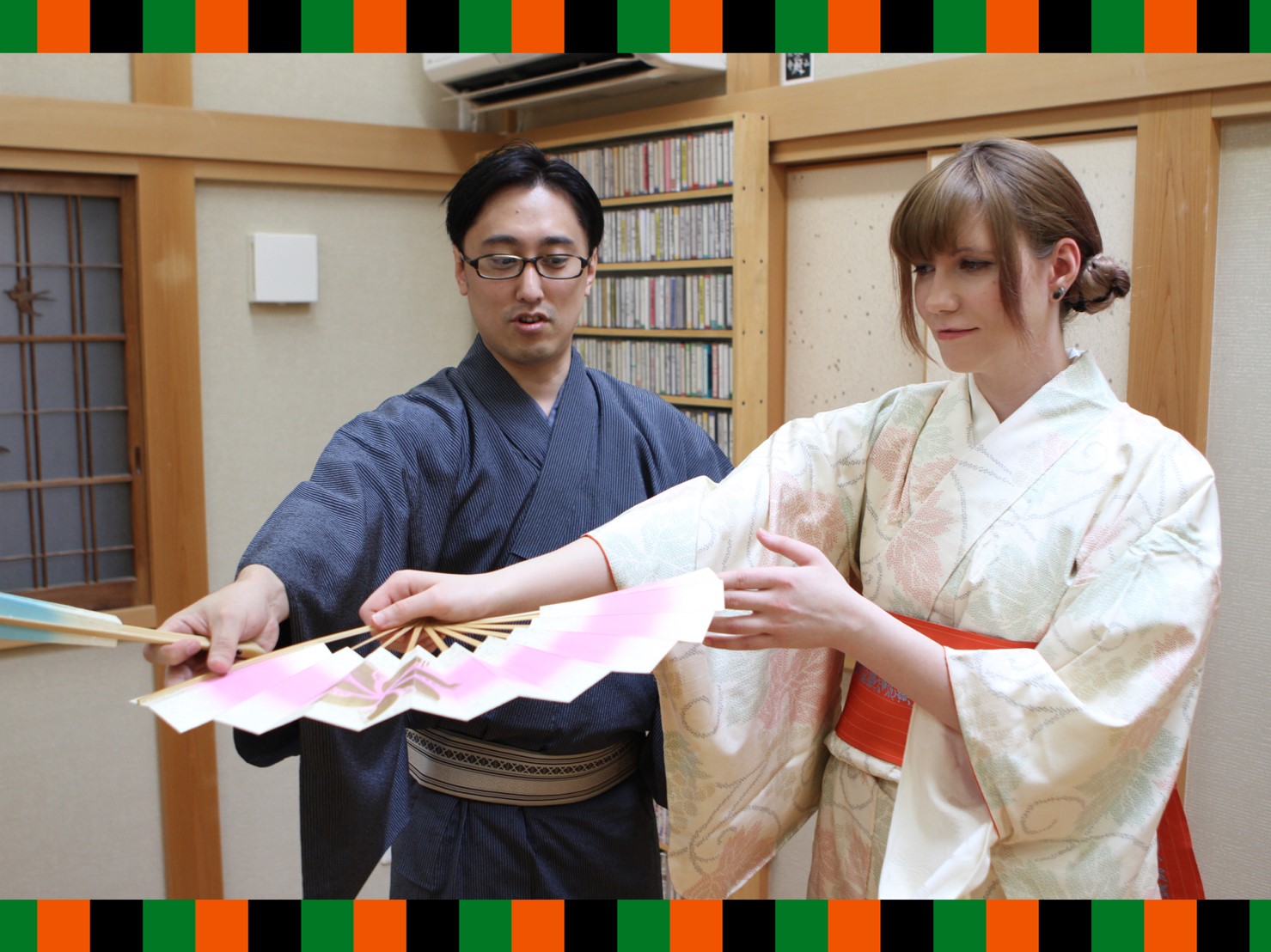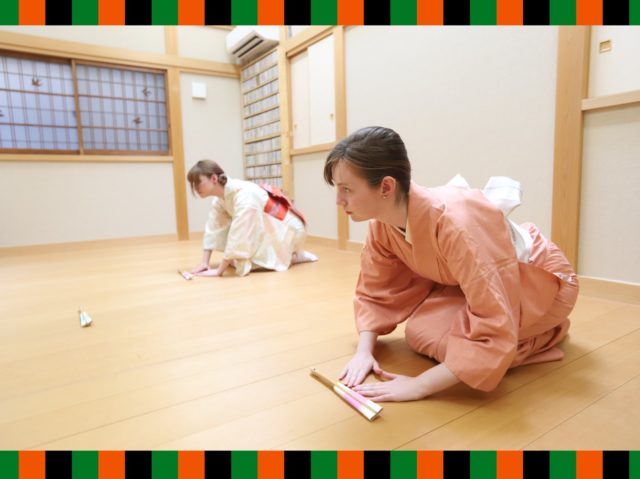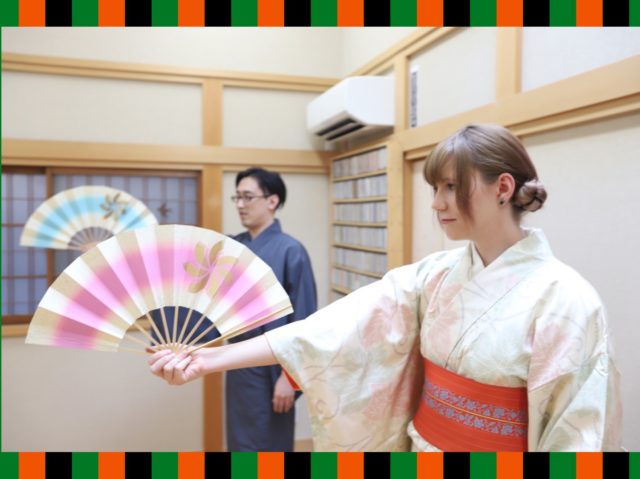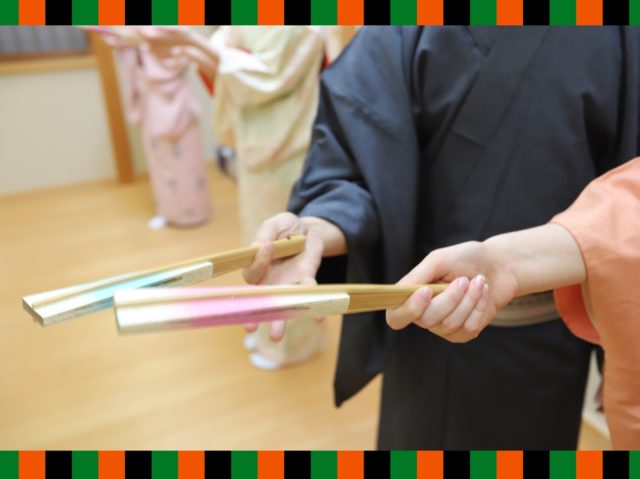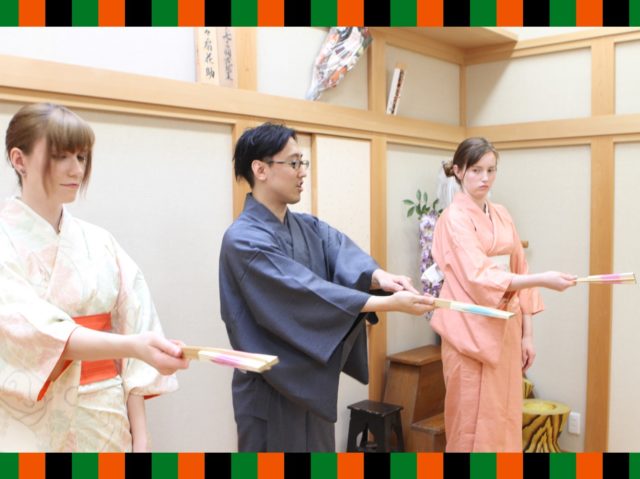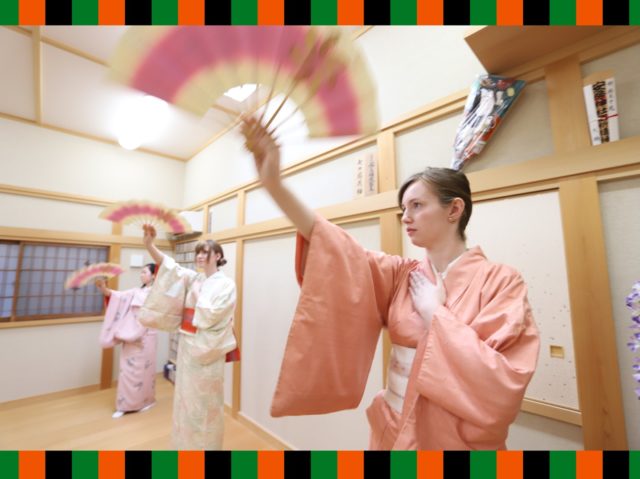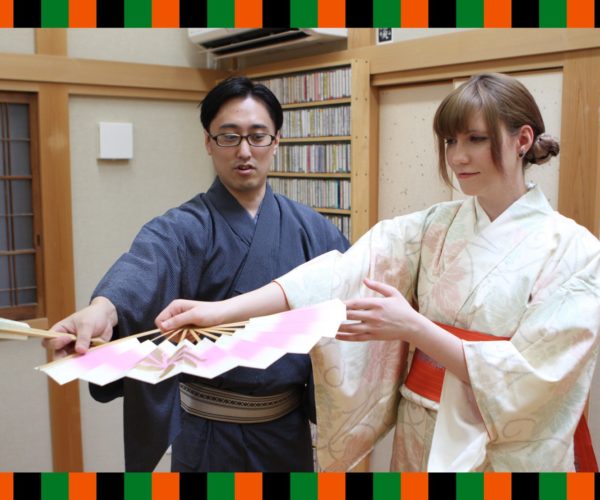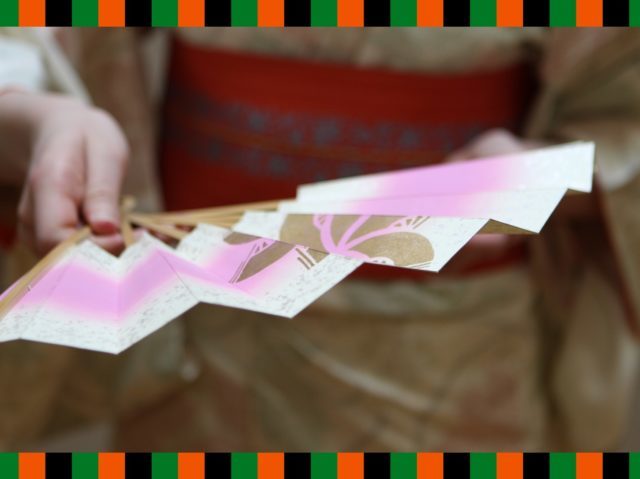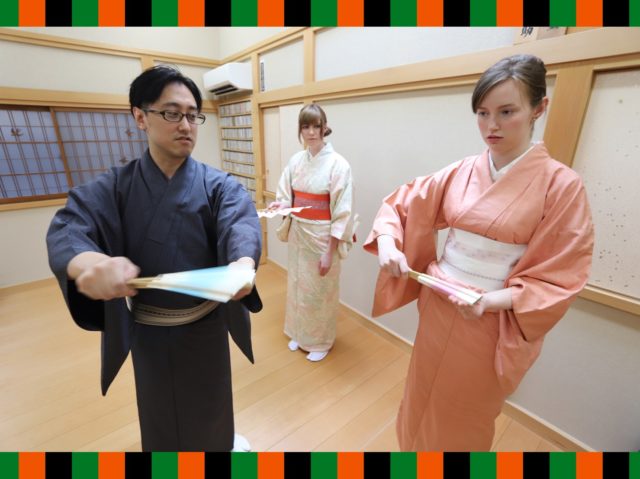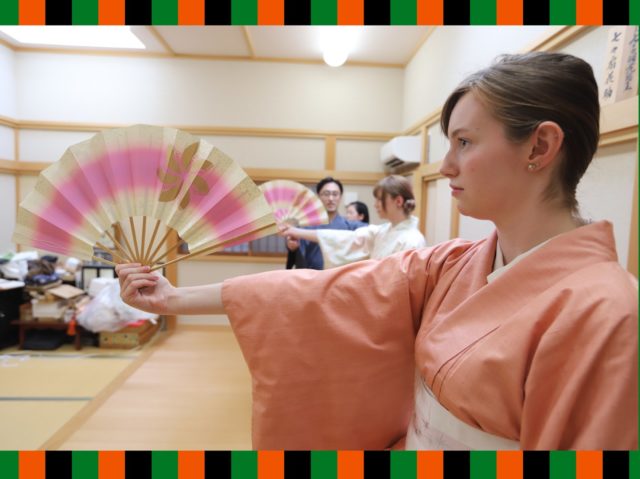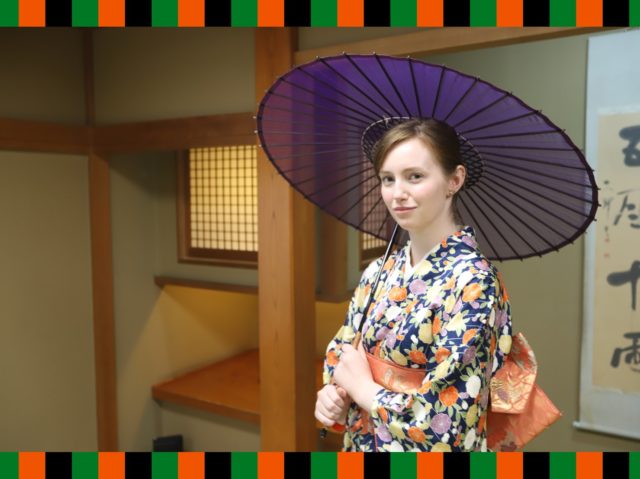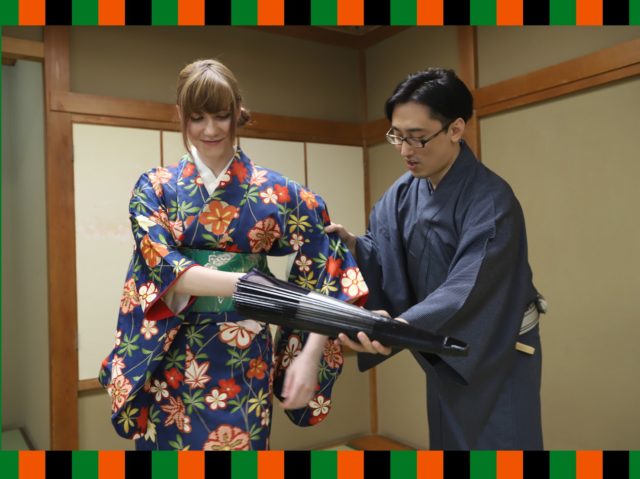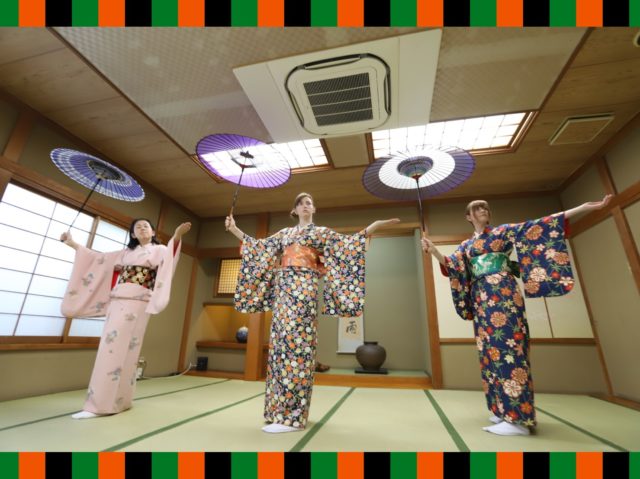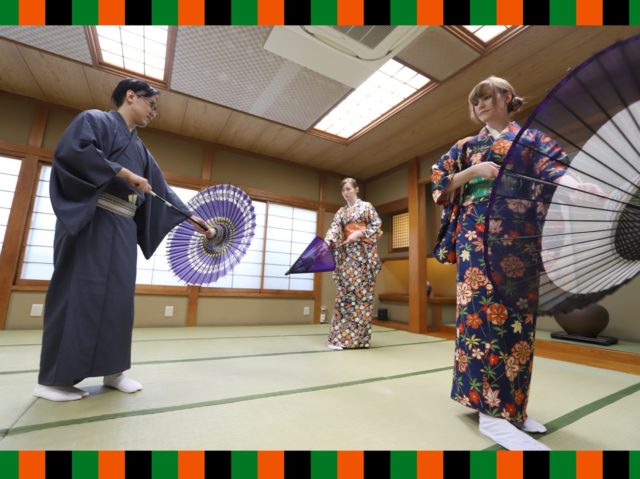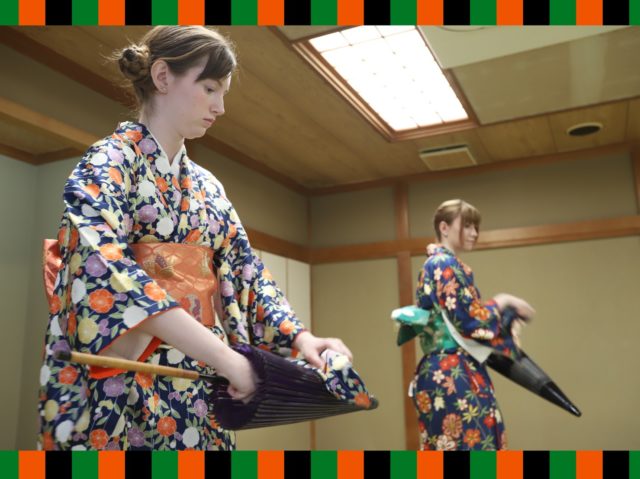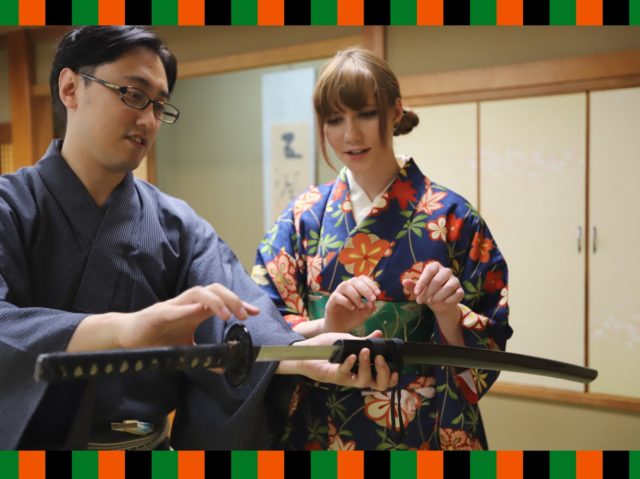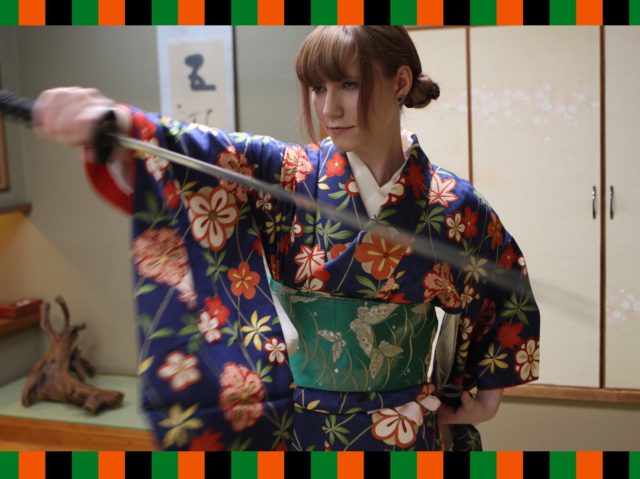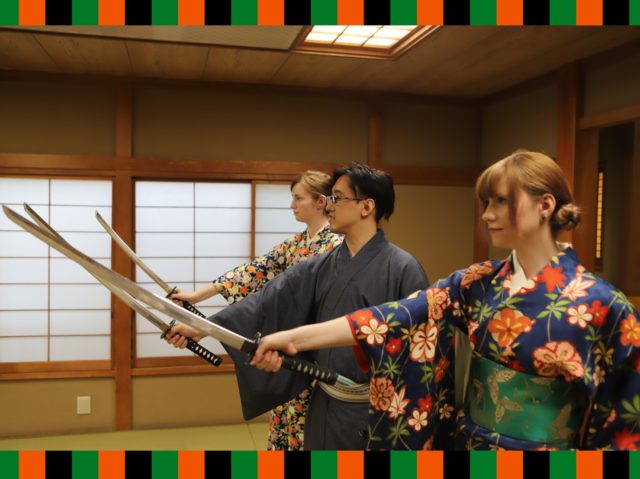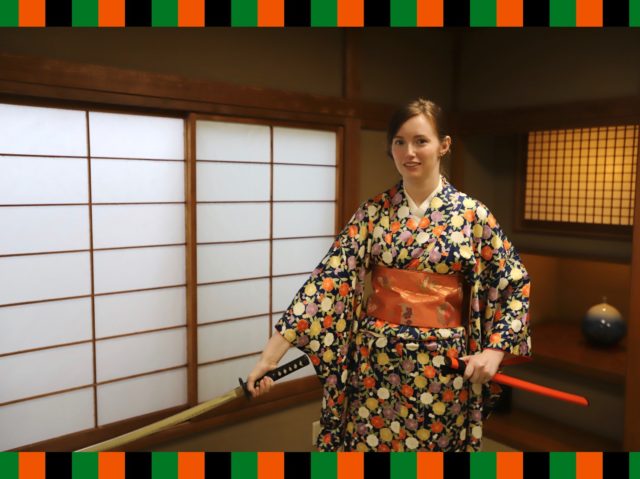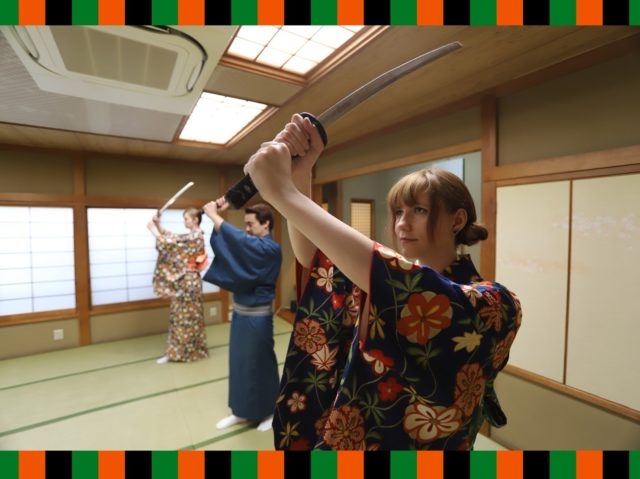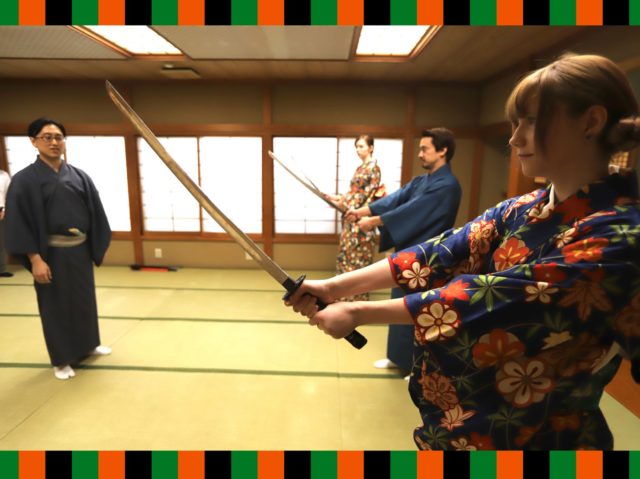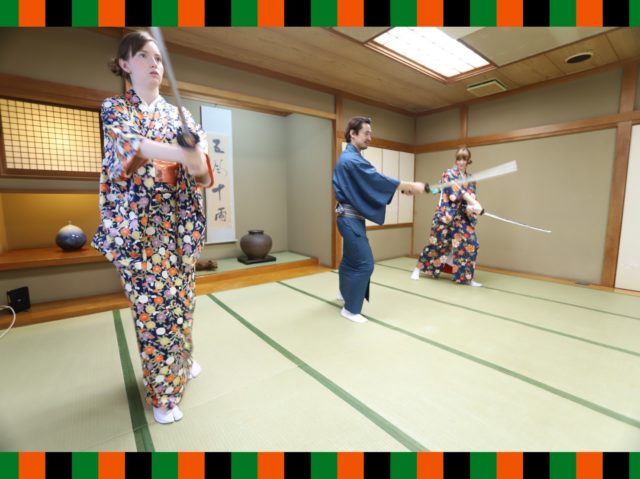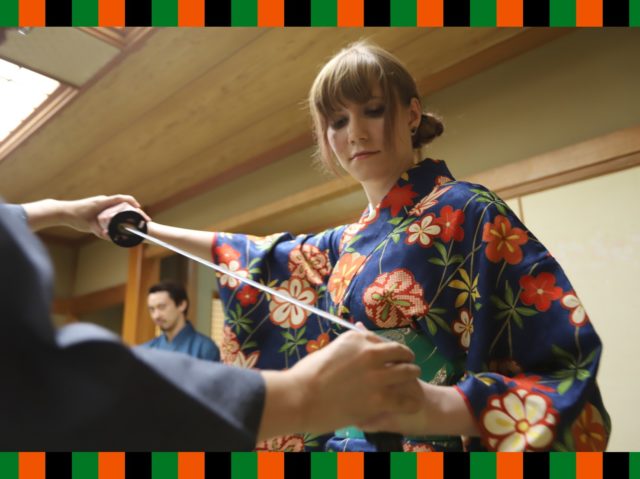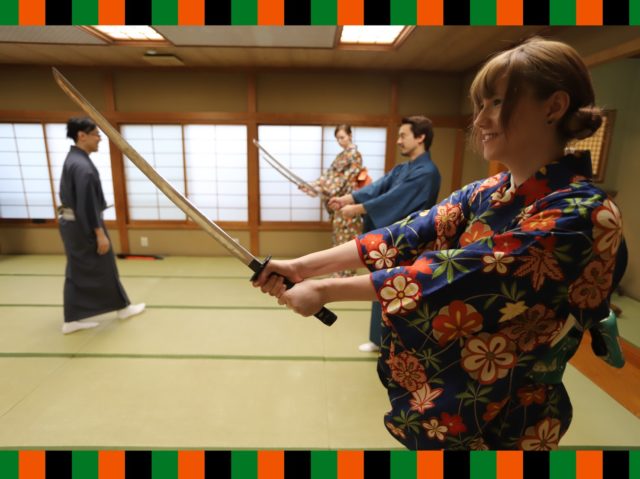Hello, I am Mizuki Nanaougi. I am a member of “Nanaougiryu”, a traditional school of classical Japanese dance.
The school was first established in Yokohama and was named by Katsu Kaisyu, who was active through the Edo period until the Meiji period. Since then, the school has been operational. Many types of Classical Japanese dance were based on movements seen in Kabuki. On stage, classical Japanese dance is performed wearing a uniform that is very similar to a Kabuki uniform.
I’ve made a trial lesson so that tourists can experience the traditional Japanese culture of classical performance, the trial comes with explanations so that people can understand it more clearly. I have been living my life side-by-side with classical Japanese dance since I was young, and currently, I am teaching younger generations this one, traditional type of classical Japanese dance, “Nanaougiryu”, in hopes to keep it prosperous. And also, I choreograph Classical Japanese dance using many different types of music, and I teach movements utilizing a sword (Katana) as well. I, a master of “Nanaougiryu”, the classical Japanese dance school, teach the techniques of Japanese people’s mind, movements and dance through Japanese traditional culture, specifically classical Japanese dance.
At the workshop that I will be holding this time, I will introduce: the basics of how to dance, how to use a folding fan while performing classical Japanese dance, and also some movements while wielding a sword, based on the basic technique of Classical Japanese dance. It is difficult to learn everything within a short time, but how about you learn some original Japanese beauty, movements and mentality through classical Japanese dance.
Contents
Experience

Experience classical Japanese dance
Classical Japanese dance is a type of Japanese traditional performance that draws its roots from Kabuki and Kyogen. At first, these dances were performed exclusively in a Kabuki act. However, currently, there are many artistic dance performance pieces which are made for classical Japanese dance separate from Kabuki.
There are currently two types of trial lessons available. Would you like to wear a kimono or Yukata-a casual summer kimono (depends on season), experience Japanese traditional behavior & movements and learn how to dance with lots of fun?
Course 1 Classical Japanese dance
Time: 1hrs 30mins.
¥12000/1 person
Putting on kimono or yukata (30mins): Kimono and/or yukata are necessary for classical Japanese dance. Staff will assist in putting on the kimono or yukata.
Learning how to bow (10mins): Japanese traditional performances start with courtesy, like a Japanese martial art. So, the lesson starts with learning how to bow.
Learning basic movements and how to dance with a folding fan (50mins): We let you experience the basic movements that are based on traditional techniques during this time. Then, let’s dance with a folding fan, which is one of the most common props used in classical Japanese dance. By wearing a kimono/yukata, you will feel how Japanese people use their body and their techniques to show their beautiful art with Japanese people’s original methods. (80mins)
Taking pictures (30mins): Since you get to wear a kimono, let’s take a photo to keep this special memory.
Course 2 “Tachimawari”(fighting performance) trial lesson
Time: 1hrs 30mins.
¥12000/1 person
Putting on kimono or yukata (30mins): Kimono and/or yukata are necessary for classical Japanese dance. Staff will assist in putting on the kimono or yukata.
Learning how to bow (10mins): Japanese traditional performances start with courtesy, like a Japanese martial art. So, the lesson starts with learning how to bow.
Learning basic “Tachimawari” techniques and performance (50mins): There are dance movements making use of swords in classical Japanese dance, this is called “Tachimawari”. This is not an actual martial art, so this is not a practical fighting method. However, you can learn how to sheath and unsheath a sword, how to posture with the sword, and some foot movements. “Tachimawari” is a fighting performance in which a sword is used. This performance will help us in moving beautifully on the stage. After we learn the basics of “Tachimawari”, we will actually try it with music.
There are two different courses. But you can wear kimono/yukata and experience classical Japanese dance in both available courses. Let’s enjoy Japanese traditional culture together.
Place To Experienc
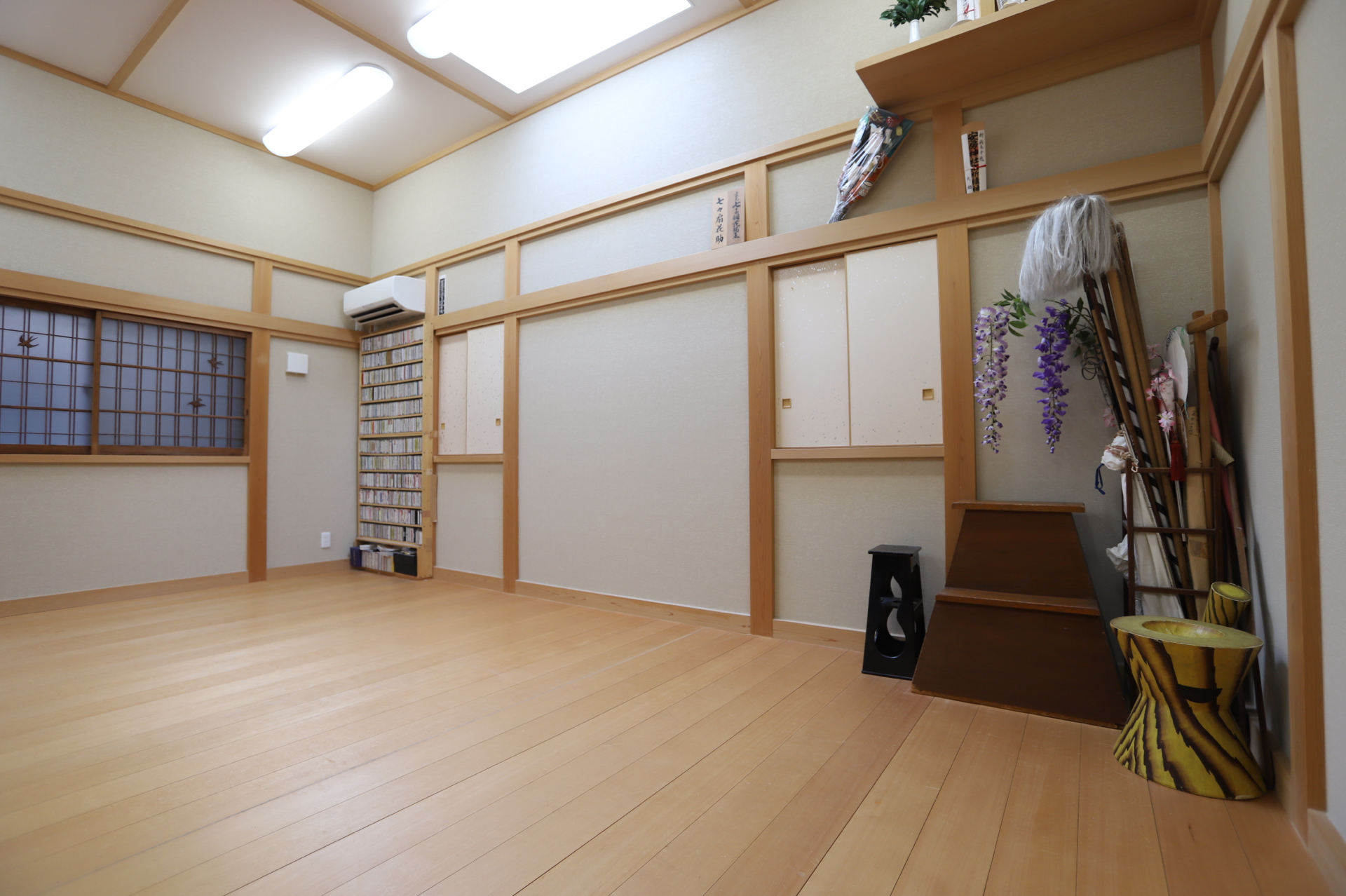
We will have an experience at the practice hall of Japanese dance that we usually use. Depending on the number of people we experience, we rent nearby studios and Japanese inns.
Meeting place: Municipal Subway Blue Line Yoshinocho Station.
Yoshinocho Station takes about 10 minutes from Yokohama Station to the municipal subway Blue Line Yoshinomachi Station.

